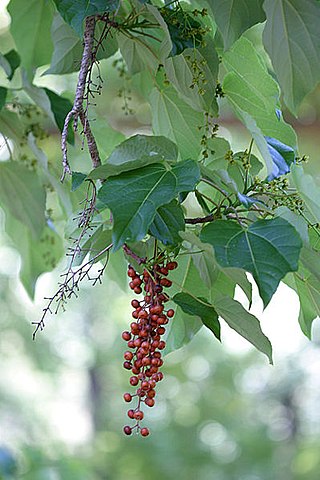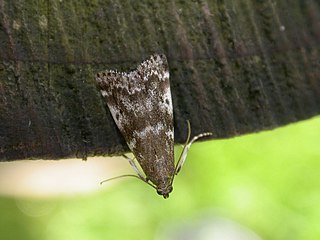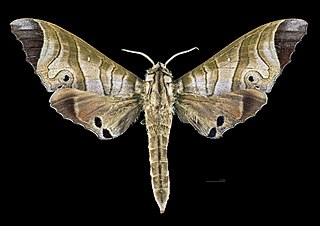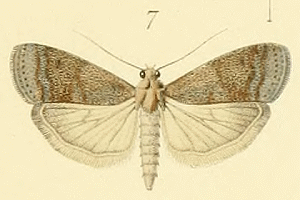
Osmanthus is a genus of about 30 species of flowering plants in the family Oleaceae. Most of the species are native to eastern Asia with a few species from the Caucasus, New Caledonia, and Sumatra. Osmanthus has been known in China since ancient times with the earliest writings coming from the Warring States period; the book Sea and Mountain. South Mountain states: "Zhaoyao Mountain had a lot of Osmanthus".

The European free-tailed bat is a species of free-tailed bat found in the Old World. Other common names include the bulldog bat and the mastiff bat because of the presence of wrinkling on the snout. This bat is found in the Mediterranean region of Europe and in scattered locations across Asia at altitudes from sea level to 3100 m. The range of distribution is from the Canary Islands and Madeira through the whole Mediterranean area, Asia Minor, the Caucasus and the Middle East. In the north to southern France, southern Germany, Switzerland, Croatia and Bulgaria. It was reported from Korea in 1931, but has not been sighted on the Korean Peninsula since then. Populations in Japan, Taiwan and Korea are now considered to be a separate species Tadarida insignis.

The Asian parti-colored bat is a species of parti-coloured bat. An adult Asian parti-colored bat has a body length of 6–7 cm (2.4–2.8 in), a tail of 4.3–4.5 cm (1.7–1.8 in), and a wing length of 5 cm (2.0 in). Asian parti-colored bats are distributed across East Asia, from Taiwan through eastern China, eastern Mongolia and Russia (Siberia) to the Korean Peninsula and Japan.

Idesia is a genus of flowering plants in the family Salicaceae, comprising the single species Idesia polycarpa. It is native to eastern Asia in China, Japan, Korea, and Taiwan.

Chamaecyparis formosensis is a species of Chamaecyparis, endemic to Taiwan, where it grows in the central mountains at moderate to high altitudes of 1000–2900 m. It is threatened by habitat loss and over-cutting for its valuable timber.

Sasakia charonda, the Japanese emperor or great purple emperor, is a species of butterfly in the family Nymphalidae. It is native to Japan, the Korean Peninsula, China, northern Taiwan and northern Vietnam. Its wingspan averages 50 mm (2.0 in) for males, and 65 mm (2.6 in) for females. They are common in the upper canopies of forests, only coming down to feed or to find salt sources. The larvae of the species feed on hackberries, like Celtis jessoensis, Celtis japonica and Celtis sinensis.

Hierodula patellifera, common name giant Asian mantis, Asian mantis, Indochina mantis or Harabiro Mantis, is a species of praying mantis belonging to genus Hierodula.

Assara terebrella is a moth of the family Pyralidae. It is found in Europe, Korea, Japan (Hokkaido), and eastern Siberia.

Ambulyx ochracea, the ochreous gliding hawkmoth, is a moth of the family Sphingidae. The species was first described by Arthur Gardiner Butler in 1885.

Lymantria mathura, the rosy gypsy moth, is a species of moth of the family Erebidae found in the Russian Far East, Nepal, Japan, the Korean Peninsula, northern India and China. The species was first described by Frederic Moore in 1866.
Assara albicostalis is a moth of the family Pyralidae. It has a wide distribution and has been recorded from India, Sri Lanka, Thailand, Sabah, the Philippines, Taiwan, Sulawesi, Australia, Fiji, Tahiti, Samoa, Hawaii and the Marquesas. This is the type species of genus Assara.

Marumba saishiuana is a species of moth of the family Sphingidae.

Assara is a genus of small moths belonging to the snout moth family (Pyralidae). They are part of the tribe Phycitini within the huge snout moth subfamily Phycitinae.

Dichomeris heriguronis, the black-edged dichomeris or black-edged carbatina, is a moth of the family Gelechiidae. It is found in the north-eastern United States, Korea, Japan, China, Taiwan and India. It has also been recorded in the Netherlands, where it is an exotic species.

Assara conicolella is a species of snout moth in the genus Assara. It was described by Alexandre Constant in 1884 and is known from France, Corsica and the Iberian Peninsula.
Assara exiguella is a species of snout moth in the genus Assara. It was described by Aristide Caradja in 1926 and is known from China and Japan.
Assara inouei is a species of snout moth in the genus Assara. It was described by Hiroshi Yamanaka in 1994 and is known from Japan, Korea and China.
Assara korbi is a species of snout moth in the genus Assara. It was described by Aristide Caradja in 1910 and is known from eastern Asia, including Japan.
Assara formosana is a species of snout moth in the genus Assara. It was described by Yoshiyasu in 1991. It is found in Taiwan and Japan.
Assara decipula is a species of snout moth in the genus Assara. It was described by Clarke in 1986. It is found in French Polynesia.













